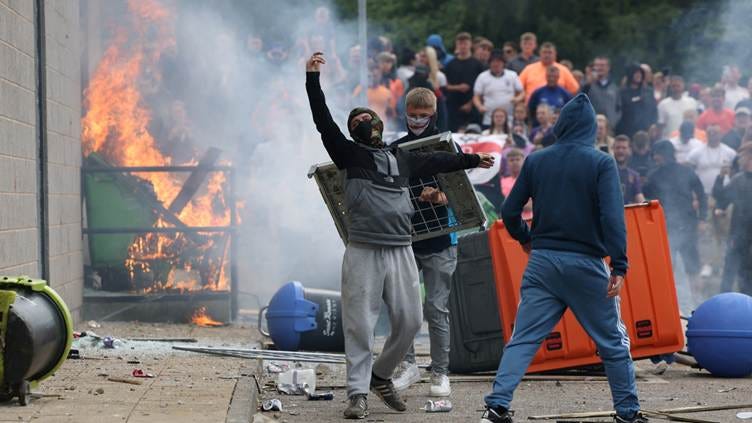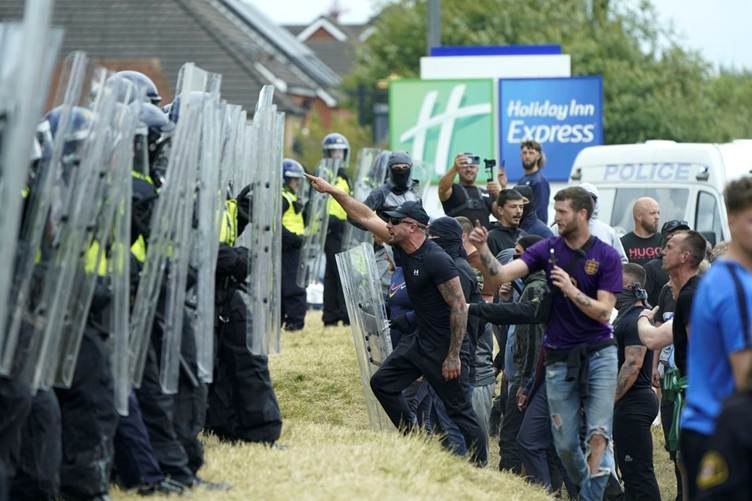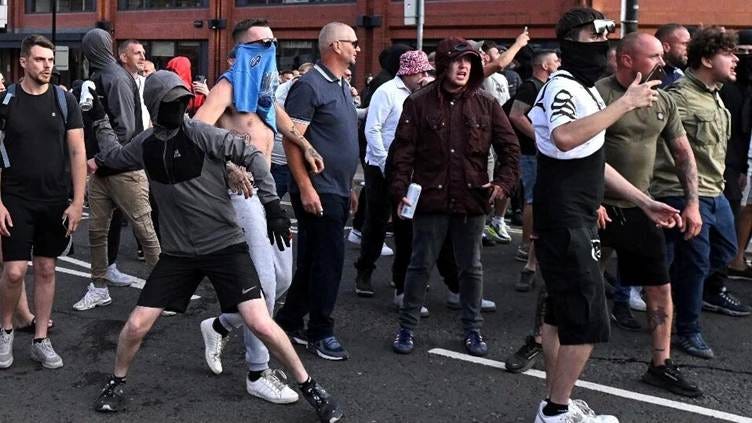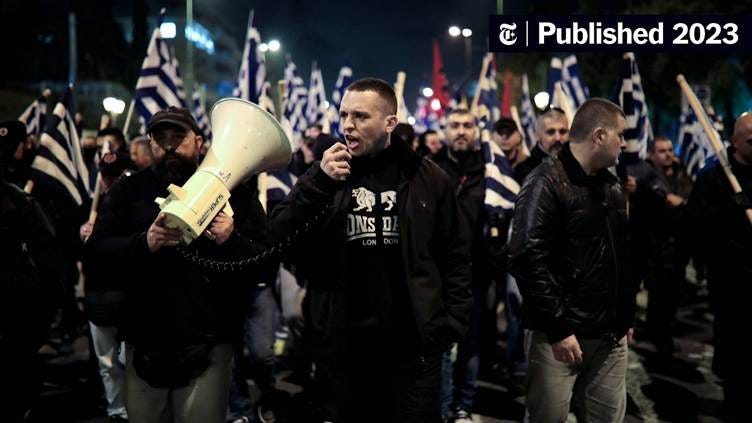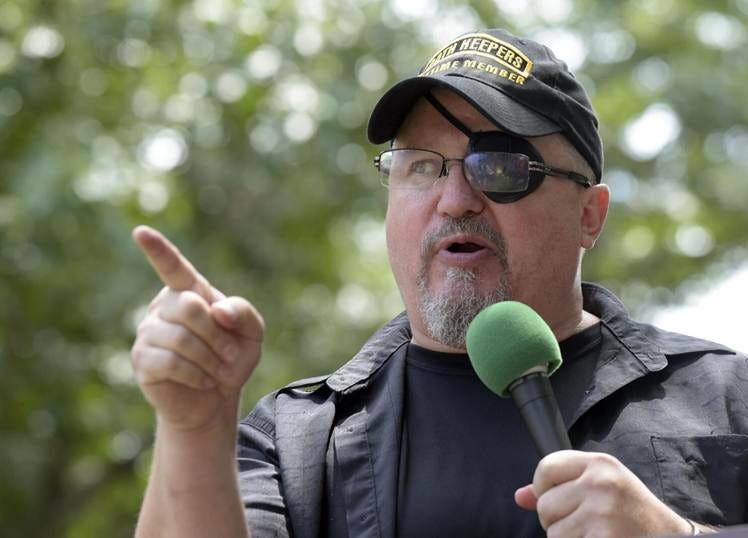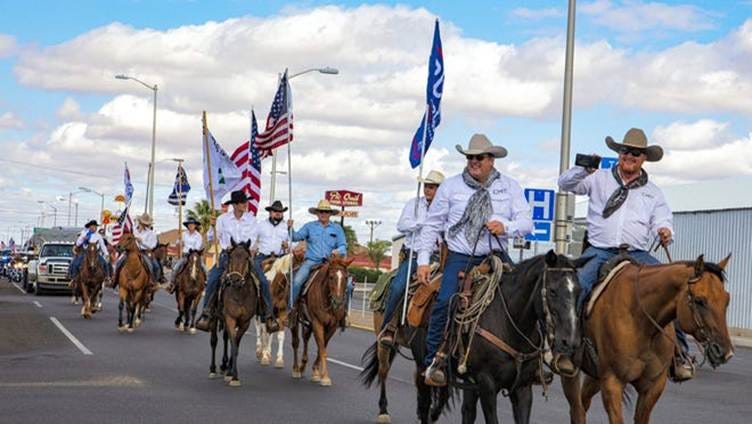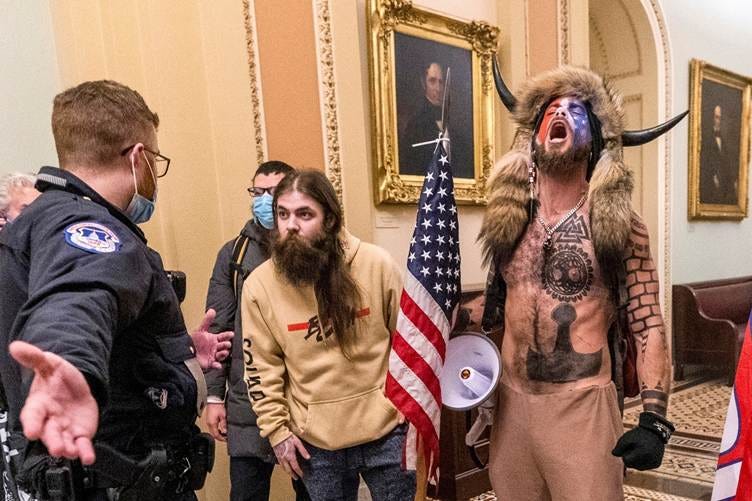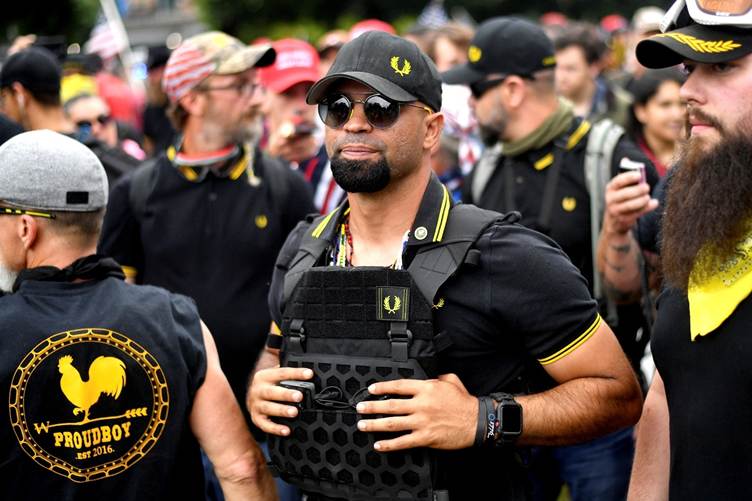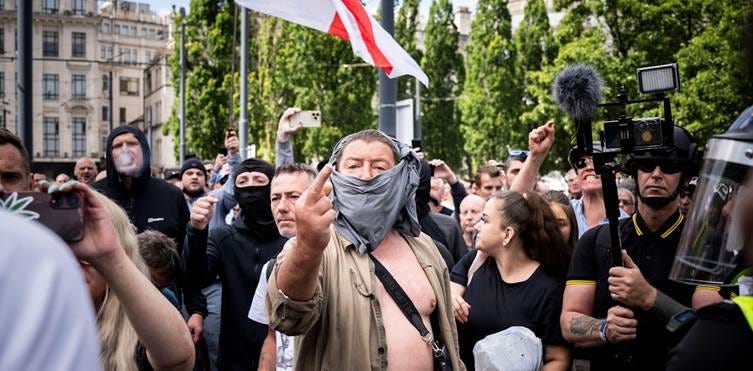On Wednesdays, We Wear Balaclavas
How the Far Right’s Obsession with the Past Extends to their Choice of Riot Wear
Picture the scene. You’ve just woken up. It’s sometime in January. Or maybe August. You roll over to check your phone, maybe have a scroll through 4chan. Or watch Rogan clips on Youtube. Suddenly, a buzz. It’s a Telegram message from your pal Dave, that reads: ‘let’s get all fired up on Carling and shout at brown people’ (reader: I have no idea how these people text, this sounds about right). Perfect. You were at something of a loose end, and those damn brown people do get on your nerves. Apparently they’ve been trying to turn Buckingham Palace into a Mosque. And impose Sharia Law on the Falklands. That’s what the memes your aunty Kath is always sharing on Facebook say, anyway. Yes, what a great plan for the day. You arrange to meet Dave at the Wetherspoons in town to sink a few before joining a larger contingent for the main event. You’ve got your placard (text: Al-Quida [sic] IS A PEDO). You’ve got your cans of premium Jamaican lager. The only thing is, that eternal question, what to wear?
The clothes that we wear are almost always decided by one simple question, regardless of whether we choose to admit it or not: How do I want to be seen, and who do I want to be associated with? This is why, in moments of intense tribalism or formality, sartorial rules get narrower and more prescriptive. Who would dream of seeing their local footy team in anything other than the correct strip, or wear a tracksuit to a wedding? You wear the team colours to be identified by your tribe, and suit up as the occasion warrants, aware that whatever you wear will be immortalised in the wedding photos.
Your choice of clothing for a political protest (or, of course, a riot) is right at the intersection of these. About as tribal as tribal gets – you are, of course, gathering with like-minded persons to express your outrage at the latest political development, but, in our hyper-surveilled society, oddly formal. Not because you expect a promotion at work on the back of your Stella-fuelled, bigoted violence, but because you are there representing your beliefs. You and everyone like you at the event are the posterchildren of a movement which, if large and outrageous enough, will dominate newspaper front pages for at least the next few days.
Fashion, style, clothing, are also often about heritage. The clothes that you wear enable you to insert yourself into a tradition, a narrative, perhaps even a lineage. This could be done to subversive effect, such as when Black US civil rights activists in the ‘60s adopted the Ivy style to underline their intellectualism and respectability. It could also serve to co-opt an existing movement, as done to great effect by the White Power skinheads in the ’80s, hijacking the aesthetic of a broadly, at times violently, working class, anti-racist faction. Or, it could signal a continuation in tradition, including the black bloc clothing adopted by anarchist and antifascist protestors since the ‘80s.
In an era of increased political instability, I’m here to ask the important questions: What does right-wing protest fashion in the 2020s say about their beliefs and intentions?
Camo is the New Black
There are a few main style tribes amongst the men behaving badly of the far-right rioting scene.
The UK may be home to some of the most respected names in heritage and contemporary fashion, but these were not broadly reflected in the sartorial stylings of our very own August rioters last year.
Most younger rioters wore quite drab sportswear, perhaps accompanied by an admittedly on-trend balaclava, or Nike tech fleece (very Central Cee).
Older rioters broadly stuck to this theme, without the more cosmopolitan affectations or nods to grime or garage underground culture. This was a no-nonsense, utilitarian, populist look: Under Armor tee, cap, sunglasses.
There was, however, a set of more modish older men present at some of the riots. Here, the figure on the right is wearing a tee from the luxury Italian sportswear brand Stone Island, whilst his lager-swigging pal behind is donned in a goggle jacket from the Bologna-based C.P. Company, and a pair of Adidas Sambas. These Italian affectations, along with the bucket hats and Fred Perry polos adorned by other members of this crowd, are fixtures of the football hooligan-adjacent terrace wear or football casuals aesthetic, which has seen a boom in popularity on TikTok in recent years, reimagined as ‘blokecore’, obviously.
Terrace wear has also left a mark on the riot-wear of choice for the European far-right.
Take this look, from a far-right rally in Greece – sportswear jacket, buzzcut, Lonsdale hoodie. Classic terrace wear. Lonsdale in particular was a fixture of the 2000s hooligan scene, so much so that the company had to bring in PR specialists in order to distance themselves from such negative connotations. Money well spent, clearly.
Or this, from an anti-lockdown protest by the neo-fascist Forza Nuova. The photo’s subject may be doing his best Tony-Soprano-in-jeans impression, but his friend on the right, is that… yes, it is. His friend on the right is wearing an actual, licensed, Chelsea FC jacket, to a riot in Rome. Fair enough.
Far-right protest fashion in the States is, predictably, as eclectic, disjointed, and ill-thought-through as the wearers’ own political doctrines.
There are the boogaloo boys, whose eye-catching pairings of aloha shirts with camo and tactical gear won plaudits in all of the wrong places.
We also have the Oathkeepers, whose leader appears to have taken cues from 17th-century piratecore in assembling his look (before you say anything, the man lost his eye after accidentally shooting himself with his own gun – so fair game, in my estimation. How this qualifies him to lead an armed insurgency is beyond me… but that’s for another day).
There are the Cowboys for Trump, donned out in their best vintage Japanese streetwear (I’m joking, they’re obviously in full Western regalia).
Jan 6th saw the emergence and endless memification of the QAnon Shaman (real name: Jacob Chansley, because of course it is), in his trapper-cum-viking-cum-Indigenous American getup.
And who could forget the Proud Boys. A group whose unrequested support for Fred Perry clothing, and in particular their twin-tipped, dry pique gold and black polo, often paired with the matching cap (very fetch) was so great that the brand literally discontinued the colourway in the States.
At least one apparent Proud Boy was also present at the August riots in the UK, complete with a quasi-military helmet (to protect against… tasers? A particularly robust batonning? Someone tell fella that British police aren’t normally armed).
Spot the Proud Boy (he’s on the right)
Soldiers, cowboys, Indians, hooligans – swap the terrace wear for some biker gear and the far-right are dangerously close to a faithful rendition of the YMCA. But what does all of this mean? What image are the far right trying to project when donning their Sunday best – and what message does this convey?
Sometimes, skin deep matters
The sartorial choices made by the members of various far-right factions and individuals on riot day are revealing. It is self-evident that every outfit is a manifestation of how we want to be seen – so how do the angry, migrant-hating, fascistically-minded among us want to be seen?
There is a divide between the uniforms of those in the States, and in Europe. The terrace-wear preferred by British, and subsequent Italian and Greek rioters has a deep pedigree in British class culture. It was, in many ways, an every-man’s uniform, with knowing dog-whistles encoded within it. Sure, everyone at the game was wearing some combination of jeans, trainers, and a t-shirt, perhaps with a big jacket in the colder months. This gave football hooligans the perfect cover, particularly after the police began to crack down on a bunch of lads just having a bit of fun throwing flares and bricks at the opposition fans. But were everyman’s trainers Adidas Sambas? Their t-shirt a Stone Island polo? Their jacket from C.P. Company? These expensive upgrades to the everyman uniform allowed members of football firms to identify themselves, and each other, as belonging to a particular, violent subculture, right under the nose of Johnny Law (for all of, optimistically, a few months, but these things do tend to stick).
The ‘hooligan’ subculture was itself rooted in the skinhead movement of the ‘60s and ‘70s. With an emphasis on working class pride and solidarity, watching the footie was one of many pastimes enjoyed by this particular segment of British society. As the historian John Clarke wrote in 1973:
“Since the Industrial Revolution large parts of working men’s lives have become increasingly subject to organisation techniques and time discipline of factory work. Football offers and alternative to that routine, but one which also draws on the major role of time in working-class experience”
But by the 1980s, this wasn’t just about breaking free from the grind – it was about reclaiming something perceived as theirs, whether that was a team, a city, or an entire national identity under threat. That sense of defiant belonging was embedded into terrace culture, which made it an easy aesthetic to co-opt for nationalist movements decades later.
The intense tribalism of football fandom, combined with the disaffection of many working class men during the Thatcher years, are what led to the violence of hooliganism. Combine this with the increasing rightward shift of the skinhead movement, and you have a potently set stage for semi-organised, racist violence.
This is the history, the heritage that many of our August rioters were tapping into. The core message of football violence (defending the home turf, standing your ground, fighting for what you believe in, fuck the law and fuck the system) does, after all, resonate perhaps a little too well with anti-migrant sentiments. The C.P. jackets, the Fred Perry polos, these are the uniforms of a manufactured, self-mythologising dissent – standing against a system they feel has abandoned them, only to turn instead to something cruder, more violent, more tribal.
This is also the heritage that the Proud Boys are attempting to tap into. That same sense of working-class defiance – repackaged and repurposed – found its way across the Atlantic, via the self-conscious efforts of their founder, Gavin McInnes. As Gav explained when asked about the natty uniforms of his militia, he wanted to “align his group with the working-class toughness of the late-60s hard mods” – the precursors to the skinheads. Once again, we have this wilful co-opting of rebellious and dissenting aesthetics in support of a fundamentally violent and exclusive worldview.
Whilst the other factions in the US far-right scene have not, disappointingly, sought to establish American chapters of other beloved British subcultures (the Republican Acid Ravers? Teddy Boys for Trump?), they are underpinned by a similar rationale, a similar sense of nostalgia. Think, if you will, of those two shining moments of American history – the Revolutionary War, and How the West was Won. Their key players? Ragtag militiamen, and cowboys. This is the heritage that Cowboys for Trump, the Boogaloo Boys, and the Oathkeepers are trying to emulate, to embody. The makers of the American destiny. True Americans. Standing up for freedom and the American way against a tyrannical regime and, inevitably, brown people. To you and me, they are grown men playing at being army men and Colonel Custer. But to them, they represent America itself. And that makes them wholly more sinister, more dangerous, than even the heritage of football violence gone political.
Right wing violence: it’s a man’s world
Something else that football hooligans, soldiers, and cowboys have in common, is that they are all MEN. Italicised, all-caps MEN. Whether the destiny-shaping frontiersmen of the American West, or the working class, hard grafting, standing your ground against the rival firm British hooligans, these are undoubtably jobs for real men. The Proud Boys agree, with their all-male membership, and self-defined status as ‘Western chauvinists’. The confluence of football hooliganism and misogyny is well-established. But even beyond this, the sense of self-conscious, misplaced machismo in the photos of these riots is palpable.
Could it be that this violence, the costumed charade of race hate, and rage against the system in all of its forms is, amongst other things, a grand performance of misplaced masculine idealism? Think of the raison d'être of these riots: January the 6th was about overturning what participants were told was a ‘stolen’ election. The August riots were mounted in an apparently earnest attempt to remove Muslim migrants, asylum seekers, and non-White people more broadly, from the UK, as a combination of a decades-long media scapegoating campaign and short-term disinformation had led many rioters to believe that doing so was the only way of ensuring the safety of ‘the children’ (as for the children of asylum seekers and migrants, well that’s a bit of a grey area). The Italians pictured above were rioting against a state-imposed lockdown, perceived as a threat to the ‘freedom’ of the people. The Greeks were rioting against what they saw as an invasion of foreigners (read: asylum seekers, fleeing the disastrous consequences of European foreign policy in Western Asia), with the welcoming assent of their treasonous government.
The narrative? Our land, our people, our freedom, is under threat. And what do men do in these situations? Not real, actual men, obviously, but the men of the movies, pop culture icons. Anyone played by Clint Eastwood. Or perhaps post-Guy Ritchie Gerard Butler. Soldiers. Cowboys. Yes, even football hooligans. They stand, they fight. They kill for what they believe in.
The leaders of these movements are well aware of the optics, the visual identity that they are encouraging their followers to tap into, and the heritage that they are embodying. Misused ideals of masculinity, at a time when many unfortunately believe that their identity, their culture, is under threat, and that they, the brave militiamen, the dissenting hooligans, and only they, can save it. All they need is the strength, the resolve, and the right costume in their wardrobe, and they can save civilisation itself. It’s a powerful, dangerous narrative, and one we would do very well to try and understand, if we have any hopes of challenging it.




